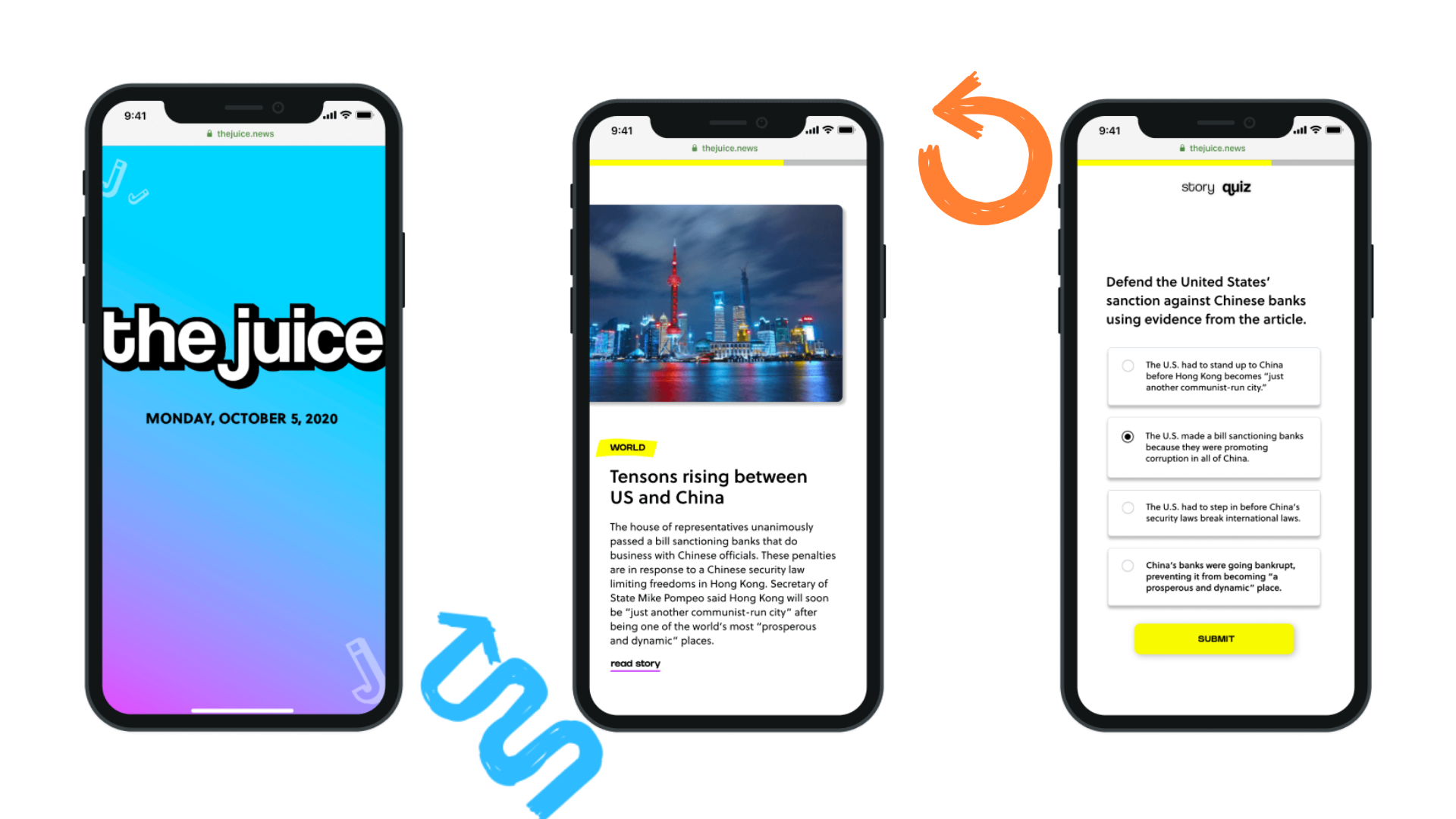Grading students in the classroom is a necessary evil for both teacher and student. Grades are a way to measure and monitor student learning and progress. They show students, teachers, parents, and school administrators how knowledge is being retained. However, determining grades usually requires testing, which can lead to test anxiety, last minute cramming, and therefore, little retention following the test.
In a world that values grades, it’s important to ensure that students are assessed in a way that is beneficial to them, as well as school administrators and faculty. We can help students come to value and appreciate grades through creatively using assessments to provide helpful feedback that informs students learning rather than providing a simple letter grade.
Testing: Why Do We Dread It?
We can safely generalize that most students dread taking tests, but tests are the most common method of assessing students in order to ensure that they are learning content required by state standards. Students fear assessments and grades for a variety of reasons, including testing anxiety, lack of preparation, a fear of consequences. Test anxiety hinders performance, which not only creates a self-reinforcing cycle of anxiety but also means that tests don’t always accurately reflect students’ true knowledge.
Intense pressure to perform well on tests shifts students’ focus towards the grade and away from the content and learning process. A Harvard research essay on testing and stress showed that students experience stress from high-stakes tests starting in elementary school. This is often because students perceive the consequences for themselves, their teachers, and school. Just last year, the State of Arkansas awarded 175 schools a share of $6.7 million dollars in recognition of their test scores for grades 3-10.
It’s not only students who are frustrated with testing. Trends show that teachers are moving away from traditional testing when possible and questioning if testing truly helps students retain information in the long-term. The Washington Post published an article revealing how teachers are incorporating projects that take place over longer periods of time in order to focus on skills like critical thinking and creativity, instead of memorization.
Getting Creative with Grading
Before deciding how to assess students, it’s important to understand the two main kinds of assessments: formative and summative assessments. Carnegie Mellon University’s Eberly Center describes formative assessment as frequent, low-stakes testing–often with little or no grading involved. Formative assessment helps students identify their progress, strengths, and weaknesses day-by-day. Think of it as checking the oil in your car before taking it in for a change: quick but informative. An example is asking students to write and submit a sentence describing the main point of a chapter they read for class that day. Students aren’t graded, but both the teacher and the student have an idea of their understanding of the content.
Summative assessment is the opposite: high stakes, graded, and evaluative assessments that take place at the end of a unit or term. These assessments determine a student’s GPA. Summative assessment could be compared to getting a yearly inspection for your car, showing you any worn down areas or necessary mechanics. Examples of summative assessments are midterm exams, final projects, or a research essay.
Both forms of assessment are important, and the lack of one can severely affect a student’s comprehension. Both types can include assessments like mini-quizzes to exams, but if a teacher or a parent is looking to be a bit more creative, they can try some of the following.
For formative assessments:
- Ask students to complete a one-sentence “exit slip” answering a question from that day’s class
- Create and play a Kahoot quiz as a class as a mid-week content refresher
- Have students complete a Think, Pair, Share exercise with partners based on an assigned reading
- Read The Juice daily news digest and complete the quiz for quick feedback on engagement and comprehension
For summative assessments:
- Have students create a website or blog based on a book or topic. For English teachers, have students create a website or blog from the point of view of a particular novel’s character
- Build an Infographic to encourage students to contextualize topics and make connections
- Create a newspaper with articles, interviews, and other features framed during a specific Historical era
When creative forms of assessment are balanced with testing, students will be able to focus on content and material more, and build a stronger foundation for high-stakes and state-wide testing. At the same time, both teacher and student will have an understanding of their progress and comprehension, revealing areas to revisit and work more on in the future.
Changing Students’ Attitudes Toward Testing

Tests and exams are an inevitable part of education because they provide important feedback for students, teachers, parents, and entire school districts. Test scores often determine funding, staffing, and other crucial aspects to a valuable school environment. At the same time, testing can be a useful educational tool and build skills that transfer to college and careers, such as strengthening students’ ability to think quickly, memorize, and communicate clearly.
This doesn’t negate how helpless some students feel when it comes to testing, especially if they experience test anxiety, despite hours of studying. In fact, the benefits of testing are easily overlooked when students’ fear or anxiety is overpowering. However, by turning students’ focus towards the benefits of testing, we can help them become better testers and reduce anxiety.
Frequent, low-stakes testing can make or break students’ scores and attitudes during a summative assessment. According to an article in The Atlantic, when students are frequently assessed, “it loses its emotional teeth and its utility as an educational tool begins to emerge.”
At the same time, when students are frequently forced to confront their knowledge on a unit or subject, like through formative assessment, they consistently engage with the content, becoming more familiar with it and shortening the distance between learning and an exam or test. Every news story within The Juice is accompanied by a standards-based question. Students learn if they answered the question correctly or incorrectly immediately, so students and teachers can get accurate feedback right away.
You can help deconstruct students’ fear or dislike of testing and build their long-term memory by:
- Incorporating at least three formative assessments on a topic before giving a longer test or major assignment
- Giving students ample time to prepare and study for a test, but not so much time that they forget the content. Remember the importance of timing
- Providing students with quick results so they know their problem-areas
- Reviewing missed topics in a positive way
- Allowing students to demonstrate their knowledge and understanding of a topic in more than just one way
Feedback Over Grades
Students can often feel either temporarily gratified or defeated based on the grade they receive. Grades seem final and signal the end of a unit or term, and students can move on quickly after getting a grade back, especially if the class has learned new material since they took the test. This can often lead students to finish a unit without processing what they needed more time to understand, and think little about why they received the grade they did.
Giving students feedback with their grades can change how students view and process their grades. Feedback can help students recognize trends and think about their test grade, even if it has been weeks since the assessment. Feedback moves beyond simple statements like “Good work!” or “This could be better,” and recognizes specific aspects of performance that were well done, or needed improvement. Feedback offers guidance and ideas for improvement and should always communicate that the teacher has confidence the student can achieve it.
Feedback can be easily interwoven with formative assessments, and even replace the grade students would have received. Feedback can also be added to summative assessment grading for a more thorough evaluation.
When giving students feedback, consider the following ideas:
- Show all students the top 10 errors or mistakes in an assessment, and review the correct answer or method together
- Create a comment box for each graded assignment to explain what students specifically did well, and where there is room for improvement
- Allow students to each write you one question about their performance or an assessment as an “exit slip,” and give thorough responses to their questions
Though feedback can be tedious and take up time, it is imperative to students’ growth. Without specific tasks or comments, students are often left wondering what they could do better- other than study more. Take the opportunity to help students succeed, and recognize patterns in their work.
The Juice
Each edition of The Juice provides daily learning checks– a great way to give feedback and engage in formative assessments every day. Keep students’ testing muscles strong and strengthen critical thinking skills with our standards-based quizzes that test students’ understanding and thinking skills.

